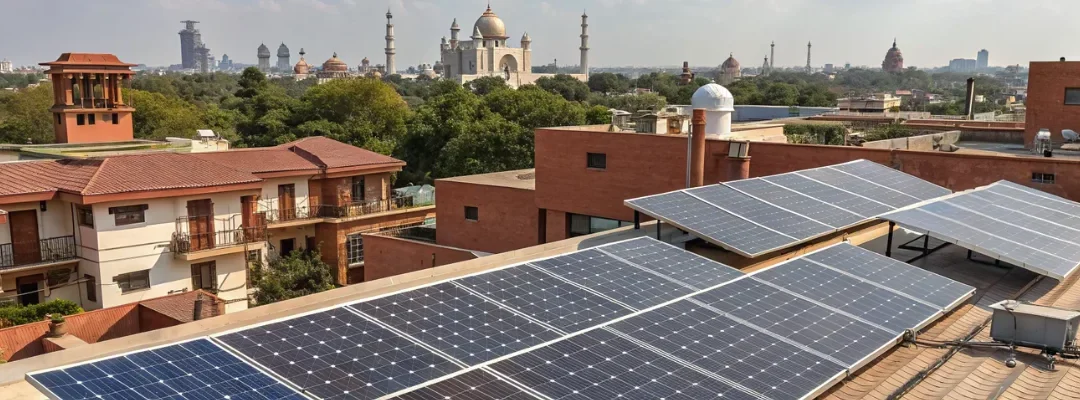Introduction: The Path to Energy Freedom
India is the world’s third-largest energy consumer, but it relies heavily on imported fossil fuels to meet its needs. Nearly 85% of crude oil and 25% of coal used in India are imported, costing billions of dollars annually and exposing the country to global price volatility.
To secure its future, India must reduce dependence on fossil fuels and invest in homegrown, renewable power. And among all clean energy sources, solar is India’s best bet for achieving true energy independence.
Why Solar Outshines Other Options
1. Abundant and Free Resource
- India enjoys 300+ sunny days per year.
- The country receives 5,000 trillion kWh of solar radiation annually — far more than its total energy demand.
- Unlike coal and oil, sunlight is free, unlimited, and domestic.
2. Falling Costs Make Solar the Cheapest Energy
- Solar tariffs have dropped to ₹2.0–₹2.5 per kWh, cheaper than new coal plants (₹4–₹6 per kWh).
- Local manufacturing and global competition continue to drive costs down.
- For households, rooftop solar now pays back in just 3–5 years.
3. Strengthening Energy Security
- Solar reduces reliance on imports, insulating India from oil shocks and global fuel price volatility.
- Domestic solar manufacturing (boosted by PLI schemes) keeps the value chain within India.
4. Environmental & Health Benefits
- Every 1 MW of solar installed avoids 1,200–1,500 tons of CO₂ annually.
- Reduced coal burning means cleaner air, lower healthcare costs, and healthier cities.
Solar vs Other Energy Sources
| Energy Source | Import Dependency | Cost per Unit (₹) | Environmental Impact | Scalability in India |
|---|---|---|---|---|
| Coal | 25% (imports) | 4.5–6.0 | High CO₂ + pollution | Limited land, supply |
| Oil | 85% (imports) | 8–12 | Very high emissions | Transport only |
| Natural Gas | 50% (imports) | 5–7 | Moderate CO₂ | Limited reserves |
| Solar | 0% (domestic) | 2–2.5 | Zero emissions | Abundant rooftop + land potential |
Solar is cheaper, cleaner, and fully domestic.
overnment Push for Solar Independence
- Pradhan Mantri Surya Ghar: Muft Bijli Yojana → Subsidies for rooftop solar in 1 crore homes by 2027.
- National Solar Mission → Scaling solar parks and rooftop capacity to help India meet its 500 GW renewable target by 2030.
- PLI Schemes → Incentives for domestic manufacturing of panels, batteries, and inverters.
- Green Hydrogen Mission → Solar-powered hydrogen production to decarbonize heavy industries.
Solar for Every Sector
- Households → Rooftop solar slashes electricity bills by 70–100%.
- Housing Societies → Common area loads powered by solar cut maintenance fees by 40–50%.
- Businesses & Factories → Captive solar power lowers costs and boosts competitiveness.
- Transport → Solar-powered EV charging reduces oil dependence.
- Rural India → Solar microgrids electrify villages, reducing reliance on diesel generators.
Expert Insight
“Solar is more than an energy source — it’s India’s insurance policy against global fuel shocks. With abundant sunshine and falling costs, India has a once-in-a-lifetime opportunity to achieve energy independence through solar.”
— Dr. Meera Patel, Energy Policy Advisor

